
Choosing a research topic can feel like stepping onto a boundless frontier, brimming with potential yet daunting in its vastness. How do you chart your course? One crucial tool is identifying research gaps, chasms within existing knowledge that hold the promise of ground-breaking discoveries.
This article delves into the concept of research gaps, unpacking their various types and highlighting their significance in advancing knowledge, refining practice, and shaping meaningful contributions to your chosen field.
Mapping the Gapscape:
At their core, research gaps are areas where knowledge is incomplete, fragmented, or even non-existent. These “dark patches” on the academic map can take diverse forms:
- Evidence gaps: These chasms reside where empirical data is scarce or absent, leaving crucial questions unanswered. Imagine grappling with the effectiveness of a new educational intervention with no studies to analyze its impact.
- Knowledge gaps: Here, the puzzle pieces simply don’t fit. Existing research might be contradictory, inconclusive, or lack clarity on key concepts. Think of stumbling upon conflicting theories about disease etiology, leaving practitioners without a clear path for prevention.
- Practical knowledge gaps: The bridge between theory and practice can be broken. Researchers may understand a phenomenon beautifully, but its real-world application remains undefined. For instance, comprehending the intricacies of climate change without readily available tools for mitigation strategies leaves action in limbo.
- Methodology gaps: Sometimes, the tools themselves are inadequate. Existing research methods might be ill-equipped to answer certain questions, leading to skewed or unreliable data. Consider the limitations of traditional surveys in capturing the nuanced experiences of marginalized communities.
- Empirical gaps: These voids hold missing data points, hindering our ability to draw comprehensive conclusions. Studying a complex social phenomenon without data from diverse geographical regions paints an incomplete picture, potentially obscuring crucial insights.
- Theoretical gaps: When the very framework for understanding a concept is shaky, knowledge built upon it crumbles. Imagine grappling with economic models that fail to account for emerging trends like globalization, hindering our ability to predict and navigate market shifts.
- Population gaps: Research can also be biased, neglecting the experiences of certain demographics or groups. This creates knowledge blind spots, leaving their needs and perspectives unaccounted for. It’s like attempting to understand human health without data from women and minorities, perpetuating healthcare disparities.
Bridging the Chasms:
Identifying these research gaps is only the first step. The true power lies in actively bridging them. By filling these voids, we not only advance knowledge but also:
- Refine practice: With robust evidence and practical applications, we can develop effective interventions, policies, and solutions to real-world challenges.
- Shaping a more equitable future: Addressing population gaps ensures all voices are heard, leading to inclusive and impactful research with benefits for every member of society.
- Catalyzing innovation: Unravelling theoretical knots and methodological limitations opens doors for novel approaches and ground-breaking discoveries, propelling our understanding of the world forward.
Charting Your Research Course:
So, how do you choose the research gap that ignites your passion and drives meaningful change? Consider these tips:
- Align with your interests and expertise: Choose a topic that excites you and leverages your existing knowledge and skills. Passion fuels persistence, crucial for navigating the research journey.
- Seek inspiration from your surroundings: Real-world challenges and personal experiences can be fertile ground for identifying relevant research gaps. Look for areas where existing knowledge leaves you wanting more.
- Stay abreast of current research: Immerse yourself in the latest literature and attend conferences to understand the state of the field and identify emerging gaps.
- Connect with mentors and collaborators: Seek guidance from established researchers and network with colleagues. Their insights and diverse perspectives can lead you to unforeseen research frontiers.
While identifying and addressing research gaps is vital for scientific progress, it’s important to acknowledge that this approach alone might not suffice to truly revolutionize our understanding of the world. Bridging existing gaps is crucial, but we also need to actively seek open questions, uncharted territories beyond the borders of known knowledge.

These open questions can emerge from several sources:
- The persistent “why?”: Even after filling a research gap, a deeper, more fundamental question might linger. This curiosity, this persistent “why?”, can propel us towards entirely new lines of inquiry. Consider the discovery of quantum mechanics – filling the gap in our understanding of light’s behaviour led to a complete paradigm shift in how we viewed the very nature of reality.
- Unforeseen intersections: When disciplines collide, sparks fly. Combining seemingly disparate fields can expose novel research questions that weren’t evident within individual silos. Imagine merging neuroscience and artificial intelligence, leading to breakthroughs in brain-computer interfaces or understanding consciousness itself.
- The evolving landscape: As the world around us changes, new questions arise. Climate change, technological advancements, and shifting societal dynamics challenge our existing knowledge, presenting open questions that demand exploration. Consider the rise of misinformation and its impact on our understanding of truth and democracy.
Embracing open questions requires a different mindset:
- A willingness to embrace ambiguity: Unlike research gaps, open questions often lack clear boundaries or established frameworks. Embracing this ambiguity is key to venturing into uncharted territory.
- Tolerance for failure: Not every open question will yield a ground-breaking discovery. Accepting the possibility of failure as a learning experience is crucial for pushing the boundaries of knowledge.
- Collaboration and cross-disciplinary thinking: Tackling open questions often requires the pooling of diverse expertise and perspectives. Breaking down disciplinary barriers and fostering collaboration is essential for navigating the unknown.
By pursuing open questions alongside addressing research gaps, we create a richer collage of scientific inquiry. We not only fill in the blanks but also expand the very canvas of knowledge, pushing the boundaries of what we know and paving the way for truly transformative discoveries.
Remember, the greatest scientific leaps often begin with a simple question, a spark of curiosity that ignites a journey into the unknown. So, embrace the open questions, venture beyond the gaps, and join the adventure of redefining the frontiers of human understanding. Besides, choosing a research gap is not just about filling a void; it’s about carving a path towards meaningful contributions. Embrace the adventure, ask bold questions, and bridge the gaps – every discovery, every step forward, shapes a brighter future for science and society alike.
References:
- Bowen, G. A. (2009). Document analysis as a qualitative research method. Qualitative Inquiry, 15(2), 270-299.
- Creswell, J. W. (2009). Research design: Qualitative, quantitative, and mixed methods approaches (3rd ed.). Sage Publications.
- Gerring, J. (2004). What is the social good and why does it matter? Princeton University Press.
- Morse, J. M., & Richards, L. (2002). Read me? An introduction to qualitative research. Sage Publications.
- Onwuegbuzie, A. J., & Johnson, R. B. (2006). Mixed methods research: A review of research paradigms
- Kuhn, T. S. (1962). The structure of scientific revolutions. University of Chicago Press.
- Polanyi, M. (1967). The tacit dimension. Routledge.
- Feyerabend, P. K. (1975). Against method: Outline of an anarchist theory of knowledge. Verso.






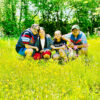

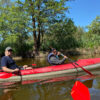


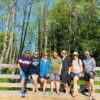
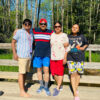

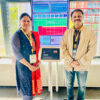

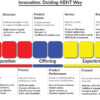
Prahlada Sir,
In simple words….
Before conducting any research, one should devise a plan to collect & evaluate data, tackle challenges & reach a conclusion.
A detailed plan will give direction to research, sharpen research methods & will set the research study for success.
Some of the elements of a good research design are :
* Purpose statement
* Data collection
methods
* Techniques of data
analysis
* Types of research
methodologies
* Challenges in research
study
* Prerequisites required
for study
* Duration of study &
* Measurement of
analysis.
One can fill the 'gaps' in research, by providing new evidence, arguments or insights, that contribute to advancement of the field.
Reply